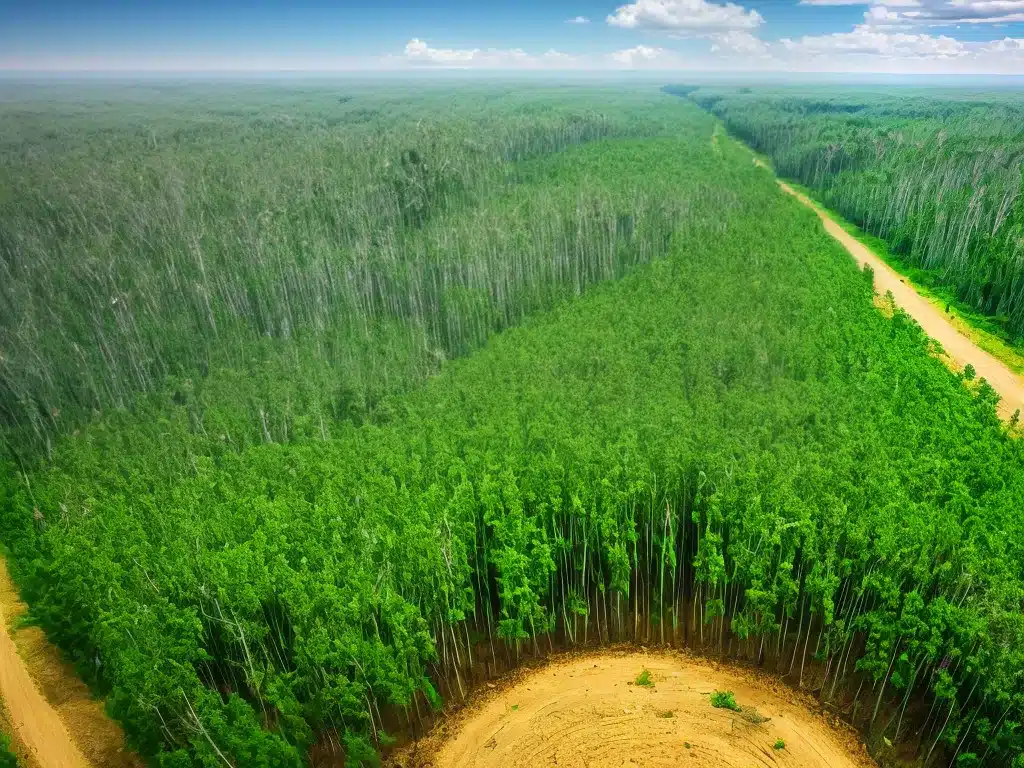How IoT Sensors Are Saving the Worlds Forests
Climate change poses an existential threat to the world’s forests. Rising temperatures, changing rainfall patterns, and more extreme weather events have made forests more vulnerable to insects, disease, drought and wildfire. This is very alarming, as forests provide habitats for plants and animals, regulate climate, supply oxygen, and support livelihoods for indigenous communities. However, new technologies like the Internet of Things (IoT) are now being deployed to help monitor, understand and protect the world’s forests.
How IoT Sensors Monitor Forest Health
IoT involves connecting physical objects like sensors and cameras to the internet to collect data. This allows near real-time monitoring of forests at an unprecedented scale. Here are some of the main ways IoT sensors are being used:
Tracking Tree Health
Sensors can now monitor the health of individual trees by tracking things like:
- Trunk diameter – unusual shrinking may indicate drought stress
- Sap flow – reduced flow can show disease or pest damage
- Leaf wetness – identifies risk of fungus or infections
- Light exposure – monitors canopy cover and growth
With a dense network of sensors, each tree can be monitored like a patient in a hospital!
Soil Moisture Monitoring
Sensors buried underground can track soil moisture levels. This identifies areas at risk of drought or wildfire. Forest managers can then direct water or other resources to the vulnerable areas.
Tracking Animal Movements
Motion-activated cameras can track animal populations, migrations and habitats. This helps quantify biodiversity and identifies at-risk species.
Tracking Forest Disturbances
Vibration sensors on trees can pick up activity like illegal logging. Trail cameras can detect intruders. This allows remote forests with limited ranger patrols to be monitored more closely.
Weather Monitoring
Weather stations collect data on temperature, rainfall, wind speed and other parameters. This provides climate insights to model future change.
How IoT Data Helps Protect Forests
The massive amounts of data collected by IoT sensors enable new analytics and visualizations to inform better decision-making. Some key uses of IoT data for protecting forests include:
Identifying High-Risk Areas
Data layers can be combined to identify areas facing multiple threats like drought, pests and fires. Resources can then be targeted to strengthen resilience.
Predictive Modeling
Data like weather, tree moisture and fuel load can feed predictive models to forecast risks like wildfire severity or insect outbreaks.
Earlier Alerts
Granular monitoring provides early alerts for emerging threats, allowing earlier intervention. Disease outbreaks, poaching activities and fire starts can be detected quickly.
Insights for Sustainability
Data can guide sustainable timber harvesting, watershed management and biodiversity protection efforts. This balances conservation and livelihood needs.
Climate Impact Modeling
Long-term data establishes baselines to model climate change impacts on things like species ranges, droughts and fire regimes. This guides mitigation strategies.
Automated Responses
Some responses can be automated based on sensor data. For example, opening vents in a greenhouse to cool plants, or activating sprinklers in a forest during fire conditions.
Real World Examples of IoT Forest Protection
IoT monitoring of forests is expanding rapidly across the world. Here are some real examples:
-
Redwoods, California – A sensor network tracks individual redwood trees, the tallest trees on Earth. This guides protection efforts for these ancient icons.
-
Congo Basin – Camera traps monitor wildlife populations like gorillas, elephants and chimpanzees amid illegal poaching and deforestation threats.
-
Indonesia – Sensors detect illegal logging in real-time, enabling rapid enforcement response. Chainsaw noise and vibrations trigger alerts.
-
Amazon Rainforest – Weather stations and fire detection cameras track threats across the world’s largest rainforest. Satellite connectivity enables remote data access.
-
Germany – Nationwide network of sensors track forest health trends and guide sustainable forestry management. Network has been operational since the 1990s.
The Future of IoT Forest Conservation
IoT-enabled forest monitoring is still in its infancy. But the technology holds immense promise for understanding and managing the world’s forests in the era of climate change. With IoT, we can give forests a voice that we understand, enabling science-based action. While challenges like costs and vandalism exist, the transformed level of insights makes the investment worthwhile. With the fate of forests tied to our own, the intelligent monitoring enabled by IoT may prove invaluable.













